Did you know that not all Bibles have the same number of books?
It may seem surprising, but the answer to how many books does the Bible have It is not just one.
Depending on whether you have a Catholic, Protestant or Orthodox Bible in your hands, the number may vary from 66 to more than 80 books, and each tradition includes or excludes texts that are fundamental to others.
Why does this happen?
What criteria were used to decide which books should be part of the Bible and which should not?
And how does this affect the way we understand God's message?
In this article you will discover not only How many books does the Bible have?, but also how it is divided, why there are differences between versions, which books are longer or shorter, and how each contributes a key piece to the plan of redemption.
Get ready to see the Scriptures with new eyes.
What Are the Books of the Bible?
The Bible is not a single book, but a collection of texts that make up a sacred library.
Each of these books was written at different times, by different authors, and in different literary styles, but they all share a common purpose: to reveal God's character, his will, and his plan for humanity.
Meaning of “Bible” as a collection of books
The word “Bible” comes from the Greek biblos either biblion, meaning “books” or “scrolls.”
Originally, the term was used to designate any set of writings, but over time it came to refer exclusively to books considered sacred by the Jewish and Christian religions.
So when we talk about the books of the Bible, we refer to individual texts—such as Genesis, Psalms, Isaiah, Matthew, or Romans—that, together, make up a unified account of divine revelation.
The Bible is divided into two large sections:
- He Old Testament, focusing on the history of the people of Israel and the promise of the Messiah.
- He New Testament, which narrates the fulfillment of that promise in the person of Jesus Christ and the emergence of the Church.
Divine inspiration and literary diversity
One of the most amazing aspects of the books of the Bible is their divine inspiration.
According to Christian doctrine, although the texts were written by real people with different styles and contexts, God guided that process to communicate his truth infallibly.
This inspiration did not eliminate the individuality of the author, but rather allowed each person to contribute their own personality, culture, and purpose.
That is why in the Bible we find a wide variety of literary genres:
- Historical narratives
- Laws and regulations
- Poetry and songs
- Prophecies
- Letters or epistles
- Gospels
- Apocalyptic visions
This diversity makes the Bible a unique literary work, capable of addressing human experience from multiple perspectives without losing spiritual coherence.
Original languages: Hebrew, Aramaic and Greek
The books of the Bible were not originally written in Spanish or Latin, but in three main languages:
- Hebrew:
Language of the Old Testament for the most part.
Used by the prophets, historians and poets of ancient Israel. - Aramaic:
A language related to Hebrew that was used in some sections of the Old Testament, such as parts of Daniel and Ezra.
It was the common language of the Jews during the exile and in the time of Jesus. - Greek (Koine):
Language of the New Testament.
It was the universal language in the Hellenistic and Roman Empire periods, allowing the Christian message to spread rapidly throughout the Mediterranean world.
Understanding the origin, purpose, and language of the books of the Bible is essential to correctly interpreting them and appreciating them for what they truly are: an eternal message that transcends cultures, eras, and languages.
How Many Books Does the Bible Have According to Each Tradition?
Although the essential content of the Bible is shared by the main branches of Christianity and Judaism, The number of books in the Bible varies according to religious tradition. to adopt her.
These differences have their origin in the historical processes of canonization, in the texts used by the first communities, and in the acceptance or rejection of certain writings.
Canon of the Hebrew Bible (Tanakh)
The Bible of Judaism, known as Tanakh, is composed of 24 books, which are equivalent to the same texts of the Protestant Old Testament, although organized differently.
The name Tanakh is an acronym based on three sections:
- Torah (Law) – 5 books: Genesis, Exodus, Leviticus, Numbers, Deuteronomy
- Nebiim (Prophets) – 8 books: includes Joshua, Judges, Samuel, Kings, Isaiah, Jeremiah, Ezekiel, and the Twelve Minor Prophets
- Ketubim (Writings) – 11 books: such as Psalms, Proverbs, Job, Daniel, Ezra-Nehemiah, and Chronicles
Unlike Christian Bibles, Judaism does not recognize the New Testament and its canon was closed around the 1st century AD, excluding the books written in Greek known as deuterocanonical.
Canon of the Catholic Bible (73 books)
The Catholic Bible contains a total of 73 books, divided into:
- 46 books in the Old Testament, which include the deuterocanonical books
- 27 books in the New Testament
The deuterocanonical books (accepted by Catholics but rejected by Protestants) include:
Tobit, Judith, Wisdom, Sirach, Baruch, 1 and 2 Maccabees, and additional parts of Esther and Daniel.
This canon was formally reaffirmed in the Council of Trent (1546) as a response to the Protestant Reformation, although it was already used in the Church since the early centuries.
Canon of the Protestant Bible (66 books)
Protestant churches accept a Bible with 66 books:
- 39 in the Old Testament
- 27 in the New Testament
Unlike the Catholic canon, the Protestant canon excludes the deuterocanonical ones and is based on the Hebrew canon from the Old Testament.
Martin Luther, one of the leaders of the Reformation, questioned the authority of books written in Greek and opted for a Bible more aligned with Jewish tradition.
Although some early Protestant Bibles included these books as appendices (under the name of apocrypha), in most modern editions have been completely eliminated.
Canon of the Orthodox Bible (up to 81 books)
The Orthodox Church accepts an even broader list of books, and the exact number may vary among its branches.
In general, Orthodox Bibles contain between 76 and 81 books, depending on the country and local tradition.
They include:
- All the books of the Catholic canon
- Other additional books such as:
- 3 and 4 Maccabees
- Psalm 151
- The Prayer of Manasseh
- 1 Esdras (which differs from the canonical Esdras)
- Book of Enoch (in some Eastern traditions, such as the Ethiopian)
These differences are due to the fact that the Orthodox Church never officially closed the canon as the Catholic Church did in Trent, allowing greater flexibility according to local tradition and liturgical use.
Understanding these variations not only clarifies the number of books in the Bible, but also helps us understand how faith, history, and culture have influenced the formation of the canon used today in different parts of the world.
How is the Bible Divided?
The Bible, although a collection of many books, is organized in an orderly and coherent manner.
Its main structure is divided into two large sections: he Old Testament and the New Testament, each with subdivisions based on the type of content and literary style.
Understanding this organization is essential to correctly navigate its pages and better understand its message.
Old Testament and New Testament
The most basic and universal division of the Bible is into two testaments:
- Old Testament:
Contains writings from before the birth of Jesus.
It tells the story of creation, the people of Israel, the laws, the prophets, and the messianic promises.
It is the part shared by Jews and Christians (although with different books according to tradition). - New Testament:
Composed of texts that emerged after the birth of Christ.
Includes his life, teachings, death, resurrection, the development of the early Church, and future hope.
Both Testaments are theologically connected: the Old Testament points to the promised Messiah; the New Testament reveals Jesus Christ as that fulfillment.
Historical, poetic, prophetic and wisdom books
Within the Old Testament, the books are grouped according to their genre or function:
- Historical books:
From Genesis to Esther.
They narrate the creation, the exodus, the conquest of Canaan, the period of the judges, the kingdoms of Israel and Judah, and the exile in Babylon. - Poetic and wisdom books:
They include Job, Psalms, Proverbs, Ecclesiastes, and Song of Songs.
They offer reflections on suffering, wisdom, worship, and everyday life. - Prophetic books:
They are divided into:
- Major Prophets: Isaiah, Jeremiah, Lamentations, Ezekiel and Daniel.
- Minor Prophets: Twelve books from Hosea to Malachi.
These books convey direct messages from God to the people, about judgment, hope, and restoration.
Gospel books, epistles and apocalyptics
The New Testament is also organized by literary genre and doctrinal function:
- Gospels:
Matthew, Mark, Luke and John.
They recount the life, teachings, miracles, death, and resurrection of Jesus from four complementary perspectives. - Acts of the Apostles:
A historical book that narrates the expansion of Christianity from Jerusalem to Rome, and the lives of the first apostles, especially Peter and Paul. - Epistles or letters:
- Paulinas (13): Written by the apostle Paul to churches or leaders such as Timothy, Titus and Philemon.
- General Epistles (8): Written by Peter, John, James, Jude and the author of Hebrews.
These letters address issues of faith, Christian conduct, doctrinal errors, and encouragement in the face of persecution.
- Apocalyptic:
The Apocalypse of John closes the Bible with a series of symbolic visions of the final judgment, the victory of Christ, and the hope of a new creation.
This structure allows the reader to approach the Bible not only as a spiritual book, but also as a library encompassing history, poetry, wisdom, prophecy, and revelation, all bound together by a central narrative: the relationship between God and humanity throughout time.
Old Testament – Number and Classification
The Old Testament is the first major section of the Bible and constitutes the spiritual, cultural, and historical foundation of Christianity and Judaism.
His books were written mainly in Hebrew, and cover the period from the creation of the world to the period before the birth of Jesus Christ.
Over time, these texts have been classified into four large groups, each with a specific literary and theological purpose.
Pentateuch or the Torah (5 fundamental books)
Also known as the Law of Moses, the Pentateuch forms the heart of the Old Testament.
It contains the theological and legal foundations of the people of Israel and their relationship with God.
- Genesis: It tells of the creation, the origin of sin, the flood and the patriarchs (Abraham, Isaac, Jacob, Joseph).
- Exodus: It narrates the exodus from Egypt, the liberation of the Hebrew people and the giving of the Law at Sinai.
- Levitical: It contains priestly laws, purity rituals and moral standards.
- Numbers: It tells of the journey through the desert and the census of the tribes.
- Deuteronomy: He reaffirms the Law before entering the Promised Land, with Moses' final speeches.
These books are fundamental not only for their legal content, but also for establishing the theological principles that the rest of the Bible will develop.
Historical Books
These books tell the story of the people of Israel from the conquest of Canaan to the return from exile in Babylon.
They document events, reigns, wars, religious reforms, and God's dealings with his people throughout the centuries.
- From Joshua to Esther, the main ones are:
- Joshua, Judges, Ruth
- 1 and 2 Samuel, 1 and 2 Kings
- 1 and 2 Chronicles, Ezra, Nehemiah, Esther
Through these stories, the reader can follow the political, religious, and social development of Israel, and observe how faithfulness (or disobedience) to the covenant with God determined its destiny.
Poetic and Wisdom Books
This group includes texts that express human emotions, philosophical reflections, and practical teachings.
They are composed primarily in the form of Hebrew poetry and contain profound spiritual truths.
- Job: An exploration of human suffering and the sovereignty of God.
- Psalms: Collection of songs and prayers used in worship.
- Proverbs: Wise sayings and practical advice for everyday life.
- Ecclesiastes: Reflection on the meaning of life and the temporality of everything.
- Song of songs: Poem that celebrates love and intimate union with symbolic language.
These books reveal the emotional, aesthetic and contemplative dimensions of the Hebrew faith.
Major and Minor Prophets
The prophetic books contain direct messages from God to the people of Israel through their spokesmen: the prophets.
Its function was to correct, warn, console, and reveal the future, especially regarding judgment and messianic hope.
- Major Prophets (5 books):
- Isaiah, Jeremiah, Lamentations, Ezekiel, Daniel
- They are called “major” because of the length and theological depth of their writings.
- Minor Prophets (12 books):
- Hosea, Joel, Amos, Obadiah, Jonah, Micah, Nahum, Habakkuk, Zephaniah, Haggai, Zechariah, Malachi
- Although shorter, their messages are powerful and relevant.
The combination of history, law, wisdom, and prophecy makes the Old Testament a diverse, profound, and essential section for understanding the Bible as a whole.
Each group of books provides a unique perspective on the character of God, humanity, and the divine plan that would be fully revealed in the New Testament.
New Testament – Number and Classification
The New Testament is the second major section of the Bible and constitutes the heart of the Christian faith.
It was written in Koine Greek between 45 and 100 AD and contains writings that narrate the life of Jesus Christ, the birth of the Church, apostolic teachings, and the hope of eternal life.
It is composed of 27 books, organized in four main groups.
The 4 Gospels
The Gospels are the central narratives of the New Testament, presenting the life, teachings, death, and resurrection of Jesus Christ from different perspectives.
These texts are not complete biographies, but theological proclamations designed to show who Jesus is and why his life transforms history.
- Matthew: Addressed primarily to Jews, it presents Jesus as the promised Messiah.
- Marcos: The shortest and most direct; it focuses on the actions and suffering of Jesus.
- Luke: Detailed and orderly, written for a Gentile audience, it highlights the compassion of Christ.
- Juan: With a more theological and symbolic style, it highlights the divinity of Jesus and his relationship with the Father.
Each gospel complements the others, forming a complete portrait of Jesus as the Son of God, Savior, and King.
Acts of the Apostles
This book, written by Luke, acts as a sequel to his gospel.
It recounts the birth of the Church, the spread of the gospel from Jerusalem to Rome, and the actions of the Holy Spirit through the apostles.
Highlights the missions of Peter among the Jews and of Pablo among the Gentiles, and shows how early Christians faced persecution, miracles, conversions, and community organization.
Acts is fundamental to understanding the transition between Jesus' earthly ministry and the universal spread of his message.
The Pauline and General Epistles
The epistles are letters written by apostolic leaders to churches or individuals, in order to teach, correct, strengthen and guide in the Christian faith.
They are divided into two large groups:
- Pauline Epistles (13 letters):
Written by the apostle Paul to various Christian communities or to his collaborators.
They include profound doctrinal teachings and practical principles for Christian living.
- Examples: Romans, 1 and 2 Corinthians, Galatians, Ephesians, Philippians, 1 and 2 Timothy, Titus…
- General Epistles (8 letters):
Written by other apostles and leaders such as Peter, John, James, and Jude.
They address universal themes such as faith, Christian conduct, perseverance, and doctrinal falsehood.
- Examples: James, 1 and 2 Peter, 1, 2 and 3 John, Jude, Hebrews (author anonymous but traditionally attributed to Paul or a close associate).
These letters reflect the diversity of early Christian thought and its unity around the figure of Christ.
Apocalypse of John
Also known as the Book of Revelation or Apocalypse, is a prophetic work written by the apostle Juan while he was in exile on the island of Patmos.
It is a highly symbolic text that presents visions of the final judgment, the return of Christ, the victory of good over evil, and the promise of a new heaven and a new earth.
Although it has been subject to multiple interpretations, Revelation offers a central message of hope: Evil does not have the last word and God fulfills his eternal promises.
Taken together, the books of the New Testament reveal the fullness of God's redemptive plan begun in the Old Testament and constitute the theological, spiritual, and doctrinal foundation of the Christian faith throughout the world.
Differences Between Catholic, Protestant, and Orthodox Bibles
One of the most common questions among those who study the Bible is why there are differences in the number of books according to religious tradition.
Catholic, Protestant, and Orthodox Bibles contain much of the same content, but vary mainly in the canon of the Old Testament, due to historical, linguistic and theological differences.
What are the deuterocanonical texts?
The deuterocanonical They are a group of books that They are part of the Old Testament in the Catholic Bible, but which are not accepted in the canon of Protestant Bibles.
The word “deuterocanonical” means “of the second canon,” not because they have less value, but because their recognition as part of the Bible occurred later in the history of the Church.
The deuterocanonical books are:
- Tobit
- Judith
- Wisdom
- Ecclesiasticus (or Sirach)
- Baruch
- 1 and 2 Maccabees
- Plus additional fragments in Esther and Daniel
These books were written primarily in Greek, not Hebrew, and were included in the Septuagint, the Greek translation of the Scriptures used by Hellenistic Jews and early Christians.
He Council of Trent (1546) officially reaffirmed these books as part of the Catholic biblical canon, especially in response to the Protestant Reformation.
Apocryphal books: why aren't they in all versions?
For Protestants, the deuterocanonical books are commonly called “apocrypha”, which means “hidden” or “non-canonical.”
Protestant churches do not include them as part of the Bible for several reasons:
- They were not included in the official Hebrew canon (Tanakh)
- They were written in a period considered intertestamental (between Malachi and Matthew)
- Some contain doctrinal elements that differ from Protestant teaching (such as prayers for the dead)
Still, many older Protestant versions, such as the King James Bible of 1611, included these books in a separate section as useful for edification, though not as inspired.
On the other hand, the Orthodox Church accepts even more books, such as 3 and 4 Maccabees, the Prayer of Manasseh, and Psalm 151, especially in the Ethiopian and Slavic tradition.
Closed barrel vs. open barrel
A key difference between the traditions is the position regarding the biblical canon:
- Catholic and Protestant Church: They consider that the canon is closed, that is, new books cannot be added to the Bible.
The canon was formally defined (although it was already recognized de facto) in councils such as Hippo, Carthage and Trent. - Orthodox Church: maintains a more posture flexible or open, recognizing different levels of authority in certain books.
Some Orthodox churches include books in their Bibles not recognized by others, guided by liturgical and regional tradition.
These differences do not affect the core of the Christian message centered on Jesus Christ, but they do reveal the richness and complexity of the process of transmission and canonization of the books of the Bible.
Understanding them allows for a more complete and respectful view of Christian diversity and how each tradition has valued and preserved the Word of God.
How were the books determined to be part of the Bible?
The Bible we read today did not emerge complete or with a predefined list of books from its beginning.
It was the result of a historical, spiritual and community process called canonization, by which certain books were recognized as inspired by God and therefore authoritative for faith and practice.
History of canonization
The word “canon” comes from the Greek canon, which means “rule” or “norm.”
He biblical canon It is, therefore, the list of books officially accepted as Sacred Scripture.
This process It was not a human imposition, but a collective discernment within the people of God to identify the texts that were already recognized by their divine authority.
In the Old Testament, the Hebrew canon was consolidated towards the end of the 1st century AD, although many books had already been accepted centuries before.
The New Testament texts began to circulate and be used from the middle of the 1st century, but it was not until the 4th century that a general list was consolidated and unanimously accepted.
Important councils (Hippo, Carthage, Trent)
Canonization was progressively affirmed in history through liturgical practice and apostolic teaching, but it was also reinforced in ecclesiastical councils which confirmed the accepted books:
- Council of Hippo (393 AD):
It was one of the first Christian councils to propose a list of books identical to the one the Catholic Church recognizes today (including the deuterocanonical books). - Council of Carthage (397 AD):
He ratified the same list and officially presented it for use in the Latin Church.
He also stated that these books were to be read in churches as inspired Scripture. - Council of Trent (1546):
In response to the Protestant Reformation, the Catholic Church solemnly reaffirmed the 73-book canon.
This council definitively eliminated any doubts about the authority of the books included, for Catholics.
The Protestant churches, for their part, based their Old Testament canon on the Hebrew canon, excluding the deuterocanonical books, although they accepted the 27 books of the New Testament without changes.
Inclusion criteria: authority, antiquity, liturgical use
The books that were recognized as part of the biblical canon were not selected arbitrarily, but based on clear and shared criteria by the believing communities:
- Apostolic or prophetic authority:
The book had to be written by a prophet, apostle or a witness close to them.
This guaranteed direct connection with divine revelation. - Antiquity and authenticity:
Those writings that were ancient and widely recognized by the Christian or Jewish community from early times were considered valid. - Doctrinal coherence:
The content was to be in harmony with the rest of the Scriptures and with the teaching received by the community of faith.
Texts that contradicted the central message of salvation were discarded. - Liturgical use and community acceptance:
The books that were read in assemblies, used in teaching, and considered edifying by most local churches were naturally accepted as inspired.
This canonization process did not create the authority of the books, but rather recognized it.
The books of the Bible were accepted because They proved to be the living and effective Word of God in the life of the people, not because a council simply decreed it.
Therefore, today we can be confident that what we read in the Bible is part of a spiritual heritage carefully preserved and guided by the action of the Holy Spirit throughout history.
The Longest and Shortest Books of the Bible
The Bible is full of contrasts not only in themes, styles, and genres, but also in length.
Some books span hundreds of chapters, others just a handful of verses.
Knowing which are the longest and shortest is not only interesting from a literary perspective, but can also help you better organize your Bible reading and study time.
What is the longest book?
The longest book in the Bible in terms of chapters is Psalms, which has 150 chapters.
It is also the longest in total number of verses and words.
Psalms is a collection of poems, hymns, and prayers, composed by various authors over time, including David, Asaph, the sons of Korah, and others.
It reflects a wide range of human emotions: adoration, regret, gratitude, anguish, trust, and praise.
In addition to its length, Psalms is one of the most cited books in the New Testament and the most used in Christian liturgy.
Which is the shortest?
The shortest book of the Bible in terms of verses is 2 John, which has only 13 verses in a single chapter.
As for words, the shortest is 3 John, which although it has 15 verses, contains fewer words than the original Greek text.
Both books are epistles written by the apostle John and are addressed to Christian communities in times of persecution and false teachers.
Despite their brevity, they contain profound teachings about truth, love, and Christian hospitality.
Fun facts about chapters and verses
- The longest chapter:
Is Psalm 119, with 176 verses.
It is a Hebrew acrostic in which each section begins with a different letter of the Hebrew alphabet.
Its central theme is the exaltation of the Word of God. - The shortest chapter:
Is Psalm 117, with only 2 verses, which invite all nations to praise God. - The longest verse:
It is located in Esther 8:9, with more than 90 words.
It is an administrative verse that records an official decree during the reign of Ahasuerus. - The shortest verse:
In most translations, it is John 11:35: “Jesus wept”.
Despite its brevity, it conveys a powerful image of Christ's compassion and humanity. - Total number of chapters and verses:
The Bible contains approximately 1,189 chapters and more than 31,000 verses, although the exact number may vary slightly depending on the version and language.
These details show that every part of the Bible, large or small, has a divine purpose.
From the lengthy chants of the Psalms to the brief warnings of an apostolic letter, every word contributes to the grand narrative of redemption.
Were all books written by the same people?
The Bible is a unique work not only for its spiritual message, but also for the diversity of its writers.
Unlike a book with a single author, the Bible was written by dozens of different people, in very varied historical, cultural and geographical contexts.
This multiplicity of voices enriches the content and demonstrates how God communicated through multiple human channels.
Multiple authors and styles
It is estimated that the Bible was written by more than 40 human authors along a few 1,500 years.
Among them are prophets, kings, shepherds, fishermen, doctors, scribes, religious leaders, and even tax collectors.
Some of the best-known authors include:
- Moses, who wrote the Pentateuch
- David, author of many Psalms
- Solomon, writer of Proverbs, Ecclesiastes and Song of Songs
- Isaiah, Jeremiah, Ezekiel, among the great prophets
- Matthew, Mark, Luke and John, authors of the gospels
- Pablo, responsible for at least 13 New Testament epistles
Each of them wrote in their own style:
- Some with poetry (like the Psalms)
- Others with historical narrative (such as Kings and Acts)
- Some with philosophical reflections (like Ecclesiastes)
- And others with doctrinal teachings (such as Romans or Ephesians)
This variety of genres and styles reinforces the literary and spiritual richness of the Bible, without contradicting its central message.
Are there anonymous books in the Bible?
Yes. Although many books have identified or traditionally attributed authors, Some do not explicitly reveal who wrote them..
Examples of anonymous books or books with disputed authors:
- Hebrews: traditionally attributed to Paul, although today most scholars consider that its author remains unknown.
- Job: its author is not directly identified.
- 1 and 2 Kings, 1 and 2 Chronicles: It is not known with certainty who wrote them, although it is believed that they were composed by inspired scribes or compilers.
- Psalms: Although many were written by David, others are attributed to Asaph, the sons of Korah, Moses, and unidentified authors.
Anonymity does not detract from the value of these texts.
Its acceptance in the canon is due to its spiritual authority, doctrinal content, and constant use by faith communities.
The role of the Holy Spirit as primary author
Despite the human diversity of writers, Christians believe that The supreme author of the entire Bible is the Holy Spirit.
The doctrine of inspiration states that God guided human authors to write exactly what He intended, respecting its context, language, and style.
As it teaches 2 Timothy 3:16:
“All Scripture is inspired by God and is useful for teaching, rebuking, correcting, and training in righteousness.”
And in 2 Peter 1:21 is added:
“For no prophecy ever came by the will of man, but men spoke from God as they were carried along by the Holy Spirit.”
This means that, although the biblical texts have a dual authorship —human and divine—, its message remains immutable and eternal.
The Holy Spirit not only inspired the writing, but continues to enlighten those who read it today and apply it in their lives.
Importance of Each Book in the Biblical Message
Each book of the Bible has a specific purpose and contributes an essential piece to the great puzzle of divine revelation.
Although they were written by different authors, at different historical times and with different literary styles, all the biblical books form a coherent narrative that reveals God's relationship with humanity and his plan for eternal redemption.
Theological unity despite diversity
One of the most striking wonders of the books of the Bible is that, despite being written over a period of more than a thousand years, They maintain a deep theological unity.
They do not contradict each other in their central message, but rather reinforce it from different perspectives.
From Genesis to Revelation, we find a common thread that unites all of Scripture:
- The holiness of God
- The fallen condition of the human being
- The promise of salvation
- The manifestation of the Messiah
- The eternal life as the final hope
This harmony between the books is not accidental or the product of later editing, but evidence that all were guided by the same Spirit that inspired their content.
How each book contributes to the plan of redemption
Each book has a function within God's great plan.
From the founding narratives to the future promises, all the texts point toward redemption in Christ.
- Genesis: reveals the creation, the fall, and the promise of redemption (Genesis 3:15).
- Exodus: presents God as liberator and provider.
- Psalms: They express worship and trust in God even in the midst of suffering.
- Isaiah: clearly anticipates the birth, suffering and reign of the Messiah.
- The Gospels: show the fulfillment of all the promises in Jesus.
- Facts: narrates the expansion of salvation to all nations.
- Epistles: They explain the doctrine of grace, justification by faith, and life in the Spirit.
- Apocalypse: It closes with the final victory of Christ and the total restoration of the universe.
Each one, regardless of its extension, contributes a dimension of God's character, the needs of human beings, and the path to eternal life.
Key books to understand the Christian faith
While all books of the Bible are important, there are some that are especially helpful in understanding the foundations of the Christian faith:
- Romans: delves into salvation by grace, faith, sin, and the justice of God.
- Juan: shows Jesus as the Son of God with a strong focus on his divinity and relationship with the Father.
- Galatians: defends Christian freedom and justification by faith against legalism.
- Hebrews: connects the Old and New Testaments, showing how Christ is the perfect fulfillment.
- Genesis: provides the basis for creation, the fall, and the redemptive promise.
- Isaiah: contains clear messianic prophecies that point directly to Jesus.
Understanding the individual importance of each book helps you see the Bible not as a random collection of ancient texts, but as a progressive, intentional and powerful revelation of God's heart toward humanity.
Each page tells a part of the most momentous story ever told: the story of redemption.
Which Books Are Commonly Misunderstood?
Despite the profound spiritual and theological value of each book of the Bible, some are especially prone to being misunderstood, whether due to its symbolism, cultural context, literary style or lack of historical knowledge.
These misunderstandings can lead to doctrinal errors, inappropriate applications, or even a complete rejection of its current relevance.
Below, we analyze four of the most commonly misunderstood books and why they deserve careful reading.
Apocalypse
The Apocalypse of John is probably the most complex and contradictorily interpreted book in the Bible.
Its symbolic language, dramatic visions, and message about the end of time have given rise to literalist, futuristic, conspiratorial, and even mystical interpretations.
Common mistakes:
- Read it as an exact chronology of future events.
- Applying it exclusively to the modern context without considering its original meaning for persecuted Christians of the 1st century.
- Use their symbols as secret codes to predict dates or identify current figures.
A responsible reading of Revelation must recognize that it is a prophetic, theological and pastoral book, whose main purpose is give hope to believers in times of affliction, assuring them that Christ has already won and will return in glory.
Levitical
Leviticus is one of the most challenging books of the Old Testament for modern readers, primarily because of its focus on ritual laws, sacrifices, ceremonial purity, and priestly regulations.
Common misunderstandings:
- Consider it irrelevant because it is full of laws that are no longer practiced.
- Taking isolated verses out of context to support moral or social arguments.
- Ignoring its symbolic value in the theology of sacrifice and holiness.
However, Leviticus is key to understanding the biblical concept of Holiness, Atonement, and the Mediating Role of the Priesthood, which is later fulfilled in the person of Christ as eternal high priest and perfect sacrifice (Hebrews 9–10).
Ecclesiastes
This wisdom book, traditionally attributed to Solomon, is one of the most philosophical and existentialist in the Bible.
With phrases like “Vanity of vanities, all is vanity”Ecclesiastes has been mistakenly read as a pessimistic or even nihilistic book.
Common mistakes:
- Thinking that the author promotes hopelessness or agnosticism.
- Ignoring that the book presents a genuine search for meaning outside of God, to show that only in Him there is purpose.
The key is to understand his message as a profound critique of life without an eternal perspective.
Ecclesiastes does not deny the value of existence, but concludes by stating: “Fear God and keep his commandments, for this is the whole duty of man.” (Ecclesiastes 12:13).
Daniel
The book of Daniel blends historical narrative and prophetic visions.
It is often misinterpreted by those who read it exclusively as a “prophetic key” to decipher the end of the world.
Common misunderstandings:
- Use your visions to construct accurate diagrams of the Apocalypse.
- Ignoring the historical context of the Babylonian exile.
- Minimizing your main message by focusing only on symbolic elements.
Daniel is not only a book of prophecy, but also a testimony of fidelity in the midst of oppression, and a powerful statement that God is sovereign over human nations and kingdoms.
Correctly understanding these books requires an approach that combines historical context, literary genre and biblical theology.
When studied carefully, far from confusing, reveal profound truths about God, life, suffering, judgment and eternal hope.
What About the Apocryphal Gospels?
In recent years, interest has grown in so-called apocryphal gospels, ancient texts that are not part of the biblical canon and that have generated debates, theories and even films based on supposed hidden secrets of early Christianity.
But what are these writings really? Why aren't they in the Bible? And how do they differ from the gospels, which were recognized as inspired?
Gospel of Thomas, Judas, Mary Magdalene
The apocryphal gospels are ancient texts attributed to biblical characters, but whose authenticity and spiritual authority were questioned from the first centuries of Christianity.
Among the best known are:
- Gospel of Thomas:
A collection of 114 sayings attributed to Jesus, without narration or context.
It presents an esoteric and gnostic vision, in which secret knowledge is key to salvation. - Gospel of Judas:
Describes Judas Iscariot as a collaborator of Jesus who betrays him out of divine obedience.
His approach openly contradicts the canonical gospels and aligns with Gnostic ideas of dualism and occult hierarchies. - Gospel of Mary Magdalene:
It suggests that Mary had access to special revelations from Jesus, elevating her role above the male apostles.
It contains mystical teachings foreign to traditional Christianity.
These texts were largely discovered in the 20th century, especially in the finds of Nag Hammadi (Egypt), and are usually dated between the 2nd and 4th centuries AD, long after the canonical writings.
Why were they excluded from the canon?
The Apocryphal Gospels were not “removed” from the Bible, as is sometimes said, but were never accepted by authentic Christian communities as part of apostolic teaching.
Reasons for exclusion include:
- Lack of proven apostolic authorship:
Unlike the canonical gospels (Matthew, Mark, Luke, and John), these writings were not written by the apostles or their direct collaborators. - Contradictory doctrine:
They present ideas contrary to biblical teaching, especially in their relationship with the gnosticism, a movement that denied the humanity of Christ and proposed an elitist salvation based on occult knowledge. - Absence of liturgical use:
The early churches did not read these texts in their meetings nor did they consider them edifying for the faith. - Limited or late recognition:
While the canonical gospels were cited from the first and second centuries, these apocryphal gospels enjoyed no recognition or spiritual authority among the leaders of the early Church.
Differences with the canonical gospels
The gospels recognized in the canon (Matthew, Mark, Luke, and John) have characteristics that make them unique and reliable:
- Direct historical connection with the apostles
- Structured narrative about the life, death and resurrection of Jesus
- Doctrinal unity around the message of the Kingdom of God, salvation by grace, and the universal mission of Christ
In contrast, the apocryphal gospels:
- They focus on isolated sayings or secret teachings
- They promote an elitist spirituality far removed from the cross.
- They lack coherence with the Old Testament and apostolic teaching
Although they may have some historical or literary value in understanding the religious context of the 2nd century, They cannot be considered part of divine revelation nor can they be compared in authority with the inspired gospels..
Knowing the difference between the canonical and apocryphal gospels helps strengthen confidence in the biblical canon and discern between revealed truth and later attempts to reinterpret Jesus from philosophies outside of Christianity.
How to Read the Books of the Bible Effectively
The Bible is a deeply spiritual text, but also extensive, diverse, and, at times, complex.
That's why many people feel overwhelmed when they start reading it.
Fortunately, there are strategies that can help you read the Bible in a clearer, more orderly, and more profitable way, so that each book reveals its richness and purpose in your spiritual life.
Chronological reading
A powerful way to understand biblical history is to follow a chronological order, that is, reading the books in the order in which the events occurred, not in the order in which they are organized in the traditional Bible.
Benefits:
- It helps you connect historical events and key figures.
- It allows us to follow the narrative of redemption progressively.
- Gives historical context to prophetic and poetic books.
For example:
- Start with Genesis, Exodus, Numbers, Joshua
- Insert the Psalms and Prophets in the corresponding periods of Kings and Chronicles
- Read the parallel gospels, following the harmony between Matthew, Mark, Luke and John
- Continue with Facts and the epistles, according to Paul's missionary journeys
- Finish with Apocalypse
Chronological reading plans are available in both print and Bible app formats, making this methodology easy even for beginners.
Reading plans by genre
Another effective way to read the Bible is to group the books according to their literary genre.
This allows us to understand the different types of content and how each relates to the overall purpose of Scripture.
Grouping suggestions:
- Historical narrative: Genesis, Exodus, Joshua, Kings, Acts
- Poetic and wise: Psalms, Proverbs, Ecclesiastes
- Prophetic: Isaiah, Jeremiah, Ezekiel, Minor Prophets
- Gospels: Matthew, Mark, Luke, John
- Doctrinal letters: Romans, Ephesians, Hebrews, 1 Peter
- Apocalyptic: Daniel, Revelation
This method allows you to immerse yourself in a specific reading style, which is useful for both topical study and devotional growth.
Using Study Bibles
A key tool for reading the Bible more effectively is to have a Study Bible, which includes additional resources to facilitate understanding of the text.
Advantages:
- Explanatory notes on difficult verses
- Introductions to each book with historical context and purpose
- Maps, timelines, and visual charts
- Doctrinal commentaries and practical applications
- Concordances and cross-references between passages
Some of the most recommended study Bibles are:
- MacArthur Study Bible
- Holman Study Bible
- NIV Study Bible
These versions not only help you understand what you read, but also strengthen your doctrinal knowledge and prepare you to share the Word with others.
Reading the books of the Bible should not be a difficult task or an empty routine.
With the right strategy, you can turn your daily reading into a transformative encounter with God, where each page becomes a living voice that speaks directly to your heart.
Book Recommendations to Delve Deeper into the Books of the Bible
For those who wish to go beyond basic reading and to delve into the serious and enriching study of the books of the Bible, there are highly valuable resources that explain the context, theology, and purpose of each biblical text.
Below are three recommended books, available on Amazon, that can transform your understanding of Scripture.
📘 “Old Testament Overview” – Paul R. House and Eric Mitchell
This book is a complete guide to exploring the books of the Old Testament in depth.
Offers detailed introductions to each book, including its historical background, literary structure, key theology, and practical application.
In addition, it is designed for students, teachers, and serious Bible readers seeking clarity without losing depth.
Its accessible yet scholarly language makes it an indispensable tool for anyone who wants to understand how each book of the Old Testament fits into the overall narrative of the Bible.
📘 “The Message of the Bible” – Eugene Peterson
This book written by the author of the biblical translation The Message (The Bible in modern language) presents a narrative and theological view of the whole of Scripture.
Peterson helps the reader grasp the Bible as a coherent story, from creation to new creation, through the life, death, and resurrection of Jesus.
This author's inspiring, pastoral, and profound approach helps integrate biblical knowledge with daily life and Christian spirituality.
📘 “Holman Illustrated Bible Handbook” – B&H Spanish Publishing
A visual and practical resource that presents a clear and graphic summary of each book of the Bible, with images, maps, diagrams, and concise explanations.
It is ideal for those who learn best visually or for those who want a quick and well-organized general understanding.
Each section includes key facts, cultural context, central message, content outline, and connections to Christ.
It also serves as support for Bible classes, sermons, and personal studies.
These three books offer distinct but complementary approaches: one academic and in-depth, one theological and narrative, and one visual and practical.
Having them in your library will allow you better understand each book of the Bible, apply it more clearly, and confidently teach others.
Conclusion – Why It Matters to Know How Many and Which Books of the Bible Are
Knowing how many and which books there are in the Bible is not just a matter of academic or cultural curiosity.
It is a gateway to a deeper understanding of a text that has transformed lives, shaped civilizations, and revealed the heart of God through generations.
Spiritual and cultural value
The Bible is the most translated, distributed, and read book in history.
It has influenced the morals, laws, literature, art and politics of countless peoples.
But beyond its cultural legacy, its main value lies in its ability to connecting the human being with his Creator, answer the deepest questions of existence and offer a path to salvation.
Every book, from the creation stories to the visions of Revelation, contributes to that spiritual impact.
Knowing which books are part of the Bible according to each tradition, and why, allows us to value its history and authority with greater respect.
Deeper understanding of God's message
When you understand how the books of the Bible are structured, what kind of text you are reading, and why they were included, the Word comes to life in a richer way.
It's no longer just about reading out of obligation, but about discovering connections, contexts, and themes that reveal God's plan of redemption with clarity and beauty.
Each book helps you see different aspects of his character: his justice, mercy, patience, power, and unconditional love.
Through laws, stories, psalms, prophecies, letters, and gospels, God communicates his will and grace with depth and purpose.
Importance for personal Bible study
Knowing what books make up the Bible and how they are organized is essential for reading and studying that goes beyond the surface.
It enables you to better apply the teachings to your life, correctly interpret the texts, and wisely share biblical truth with others.
In addition, it protects you from doctrinal errors, misinterpretations, and manipulations, as you develop discernment and a solid foundation.
The Bible is not simply a collection of ancient books.
It is a living collection of divine messages, carefully preserved over the centuries to reveal to you who God is, who you are, and how you can walk in purpose, hope, and redemption.
And you? Which of the books of the Bible has had the greatest impact on your life so far?
Share your experience in the comments, and let's enrich this journey through the Word together.
Frequently Asked Questions (FAQ) about How many books are in the Bible?
How many books does the Catholic Bible have?
The Catholic Bible contains 73 books: 46 in the Old Testament and 27 in the New Testament.
Includes the so-called deuterocanonical, which are not present in the Protestant Bible.
How many books does the Protestant Bible have?
The Protestant Bible includes 66 books: 39 in the Old Testament and 27 in the New Testament.
It excludes the deuterocanonical books, basing itself on the Hebrew canon.
Why are there differences between Bibles?
The differences arise from the canonization process and which books were considered inspired by different religious traditions.
Catholics and Orthodox Christians accept more books than Protestants, especially those from the Old Testament.
Which books are not in all versions?
The deuterocanonical books (Tobit, Judith, Wisdom, Ecclesiastes, Baruch, 1 and 2 Maccabees, and parts of Esther and Daniel) are in Catholic and Orthodox Bibles, but not in Protestant ones.
Some Orthodox versions include additional books such as 3 and 4 Maccabees and the Prayer of Manasseh.
What does “deuterocanonical” mean?
It means “of the second canon.”
It refers to books accepted by the Catholic Church as inspired, but which were subject to debate in the early history of Christianity and are not in the Hebrew canon.
What is the first book ever written?
Probably Job It is the oldest book in terms of writing, although Genesis It is the first in the biblical order.
Both are part of the Old Testament and reflect the oldest beliefs and experiences of the Hebrew people.
What books were written by Moses?
Moses is traditionally credited with the first five books of the Bible, known as the Pentateuch or the Torah:
Genesis, Exodus, Leviticus, Numbers and Deuteronomy.
What are the apocalyptic books of the Bible?
In the Old Testament, the book of Daniel contains apocalyptic elements.
In the New Testament, the main one is the Apocalypse of John, which presents visions of the end times and the final victory of Christ.
Is it correct to read only the New Testament?
Although the New Testament is fundamental to the Christian faith, reading only that portion limits understanding of the full message.
The Old Testament provides the historical and theological context necessary to fully understand Christ and his mission.
Can I read the Bible in no particular order?
Yes, it is possible, especially if you seek to meditate on thematic or devotional books.
However, reading it in a structured way (by genre, chronology or canon) helps to better understand the narrative and overall purpose of Scripture.
Discover How the Bible Can Transform Your Life
- Bible Study – explore the teachings of the Bible and find answers to life’s challenges.
- Fundamental Beliefs – delves into the principles that have guided millions through the centuries.
- Spiritual Growth – Strengthen your faith with studies designed to bring you closer to God.

Discover How the Bible Can Transform Your Life
- Bible Study – explore the teachings of the Bible and find answers to life’s challenges.
- Fundamental Beliefs – delves into the principles that have guided millions through the centuries.
- Spiritual Growth – Strengthen your faith with studies designed to bring you closer to God.


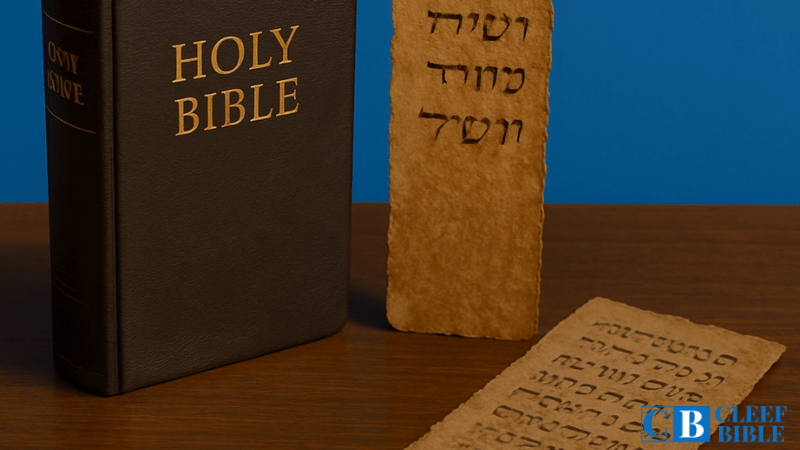



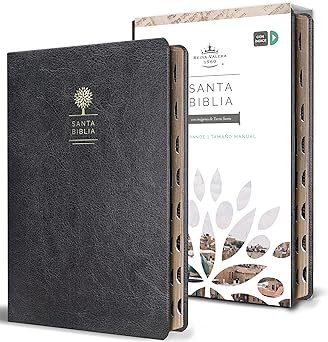








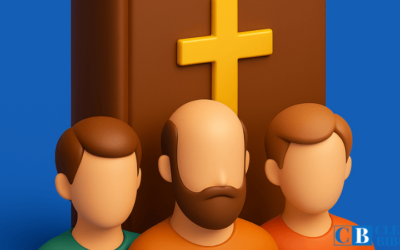
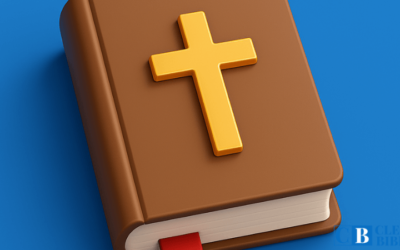
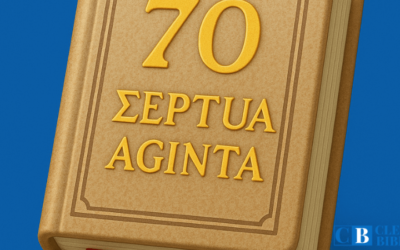







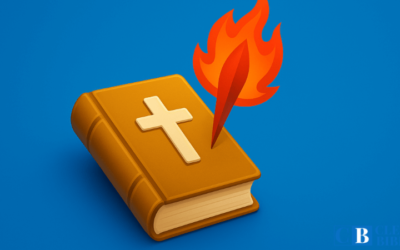
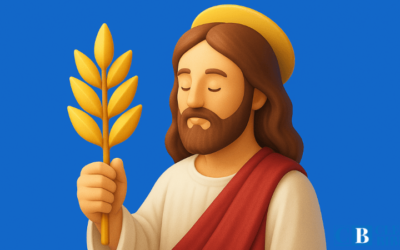
0 Comments